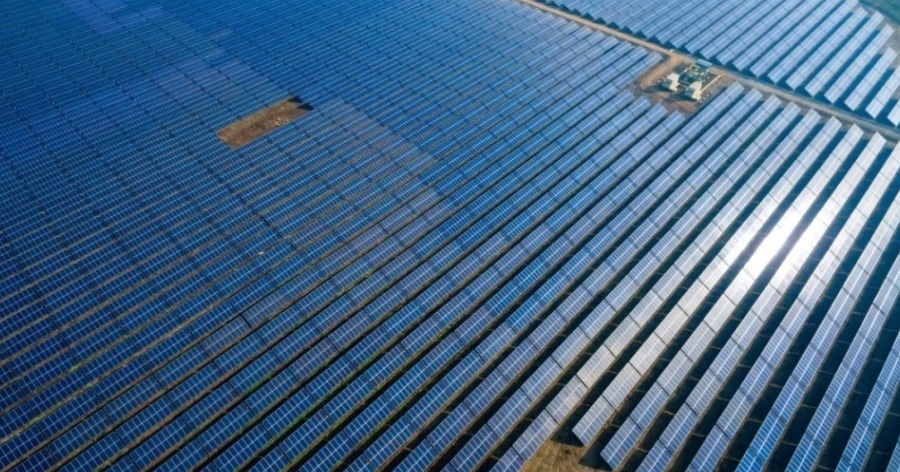Innovations in Sustainable Energy have presented the sector as an attractive alternative although the transition process is not without its fair share of challenges, observes Dr. Shantanu Trivedi

With the dire impacts of climate change increasingly threatening the existence of mankind, switching to sustainable sources of energy has become a primary pillar of the survival strategy adopted by nations on a global front. Not only this transition is required to reverse the harmful impacts of climate change but also to ensure energy security, economic growth, and the overall well-being of future generations.
Sustainable energy is derived from renewable sources that are clean, can be replenished naturally, and don’t impact the environment adversely. United Nations predicts that sustainable sources could fulfill 65 per cent of global energy requirements by 2030 and decarbonise the power sector by 90 per cent by 2050. With such promising potential on its side, here’s a close look at the innovations and challenges associated with the category of sustainable energy.
Innovations in Sustainable Energy
Solar Energy: Valued at $90.4 billion in 2022, the solar energy sector will grow at 16.04 per cent CAGR to reach $215 billion by 2032. The enviable growth is catalysed by a slew of breakthroughs including the development of efficient solar panels, new-age tracking systems, and efficient storage and transmission solutions. The emergence of Photovoltaic cells and their refinement enabled by Passivated Emitter and Rear Cell (PERC) technology is also breaking new grounds for solar energy in the sustainable sources category.
Wind Energy: The total installed capacity of wind energy is likely to touch 2,000 GW by 2030. The supply could fulfil 19 per cent of the global power requirement and create more than two million jobs globally. The sustainability impact of this transition is crucial as it will reduce CO2 emissions by up to 3 bn tonnes every year. Many innovations are powering wind energy with offshore farms, longer turbines, and taller towers taking centre stage. In addition, the category is making giant strides in developing superior crane technology, steering controls, and turbine lenses to achieve higher operating efficiency.
Hydropower: Contributing to environmental sustainability in a big way, the hydropower sector is set to expand by 17 per cent, thereby adding 230 GW to the existing capacity by the end of 2030. The most crucial innovation here is happening in the turbine space where the technology advancement is enabling a significant increase in the power generation capacity of small-scale hydro projects. The advancements in design technology, environment mitigation impact, and energy-efficient storage solutions are also powering the expansion of the category among a wider set of prospects.
Biomass Energy: Touted to be among the fastest emerging categories, breakthrough innovations in the biomass category are proving instrumental in decreasing the reliance of transportation and industries on fossil fuels. Biofuels such as biodiesel are catalysing innovations in the automobile ecosystem while the use of biomass is helping companies to fulfil their energy needs in a clean, green, and sustainable manner.
Geothermal Energy: Specifically relevant for the application in heating and cooling, the principles of geothermal energy are used to trap the internal heat of the earth. In contrast to other categories, the speed of innovation here is rather steady. However, the recent advances in the binary power plant and geothermal systems are now boosting the category growth like never before. In the near future, the progression in sensing, discovering, drilling, and trapping techniques will likely support the expansion of geothermal energy beyond its conventional boundaries.
Nuclear Energy: With impressive environmental credentials on its side, nuclear energy has the potential to meet global energy requirements singlehandedly. The generation of nuclear energy is based on the fission process and by sourcing and using uranium sustainably, the category can help the world to make much-needed progress on achieving sustainable development goals. The integration of artificial intelligence (AI), machine learning (ML), and data analytics (DA) have made nuclear energy even more impressive in its power generation capacity and operating efficiency.
Sustainable Energy Sources: Transition Challenges
Storage and Transmission: Unlike fossil fuels, the energy generated by sustainable sources is intermittent and cyclical. To enjoy a constant and uninterrupted flow of energy, these renewable sources must be backed by efficient storage and transmission solutions. This, in turn, mandates upgrade in existing facilities, the development of efficient solutions, and unwavering support from both stakeholders and shareholders from across business ecosystems.
Grid Integration and Management: Integrating renewable energy sources within the existing grid infrastructure is a formidable challenge that needs both technical and management support. Concerted efforts are required to build smart grids, devise their integration, and manage their constantly changing demand-supply dynamics. The burden of legacy infrastructure is also a hurdle as doing away with conventional systems at once is quite a difficult decision to make.
Capital Requirement: Making a transition to sustainable energy requires a long-time commitment from stakeholders including nations, corporations, and policymakers among others. Money is required on multiple fronts, i.e., creating facilities, integrating infrastructure, and managing constantly changing requirements on demand and supply fronts. To fund all these activities, many novel financing models such as impact investment, carbon credits, and green bonds are emerging in the sustainable energy sector.
Compliance Issues: Meeting regulatory, legal, and environmental compliances is another significant challenge hindering the widespread adoption of sustainable energy on a global scale. It is crucial to understand the positive impact of constructive policies, institutional support, and incentives as all these measures help in widening the net of renewable energy among the masses.
Sustainable energy sources are going to play a critical role in reversing the harmful impacts of climate change and preserving our ecosystem for future generations. The avenues of sustainable energy mentioned above paint a promising picture and by finding solutions to challenges related to renewable energy, nations can fulfil the dream of having a wholesome, prosperous, and fulfilling future.
About the author: Dr. Shantanu Trivedi is Assistant Professor, Supply Chain and Business Sustainability, UPES ON

